If you have green worms in your garden and they have been tearing through your plants, vegetables, and flowers, there are ways to control them without causing damage to your precious plants and greens. Before we discuss treatment and prevention options, let’s talk about the many different kinds of green worms and how they live and reproduce.
Some of the most common types of green worms feed on green vegetables such as broccoli and cabbage. Cabbage worms, cabbage loopers, and diamondback worms are all green in color, but the hues vary in richness. The cabbage worm is bright green. It is the larvae of the white butterfly. Cabbage loopers are light green and they are the larvae of the brown moth. Diamondback worms are pale green and they are the larvae of the unique gray moth. The gray moth has a diamond shape on its back.
Broccoli worms do not feed on broccoli alone. They feed on Brussels sprouts, kale, cabbage, and cauliflower. Unfortunately, these worms cause serious damage to plants and crops. In the case of the cabbage worm, the white butterfly lays its eggs on the undersides of leaves. When the eggs hatch, they feed on plants until there is nothing left.
There are ways to prevent these types of worms such as using row covers during spring, summer, and when these pests are most prevalent; placing the heads of the plants in a nylon stocking until its ready for harvesting, or you can use sprats of insecticidal soaps. You can also prevent their numbers from increasing through early detection. Inspect your plants everyday to check for signs of brown or gray moths and white butterflies as well as the eggs, and worms.
You can get rid of green worms in your vegetables and plants by using Bacillus Thuringiensis (BT). BT is a bacterium that kills pests, but it won’t harm your plants. You can purchase BT at most plant stores, hardware stores, and garden centers.
Other Green Worms
Many green worms are not worms at all. They are caterpillars. Just a few common green worms (caterpillars) include the larvae of the polyphemus moth, the luna moth, promethea moth, green-striped mapleworm, sweetbay silkmoth, cecropia moth, hickery horned devil, and the Io moth. These insects are commonly found in northeastern parts of the U.S. Another type of green worm is the inchworm. They are either green, black, or brown. These types of worms attack crops, plants, and gardens and their eating habits can cause massive destruction to food crop foliage.
About Inchworms
Inchworms will eat as many holes as they can in leaves of all kinds. While inchworms may seem like a nuisance to farmers and gardeners alike, they are actually quite valuable to fishermen. Excellent for fishing, inchworms can be purchased online or through any fish and bait store and they can be found in environments throughout North America.
An inchworm is the larvae of moths of the family Geometridae (phylum Arthropoda, class Insecta, order Lepidoptera). This large, widely diffused group has more than 1,200 species indigenous to North America. Some inchworms are considered average while others are considered extraordinary. Inchworms do, however, have many common characteristics. They have smooth, hairless bodies, and they typically grow up to one inch in length. Their colors run the gamut from brown and black to bright green.
Also referred to as loopers, measuring worms, and spanworms, inchworms have three pairs of legs at the front end and two to three pairs of prolegs or larval abdominal appendages at the rear. Inchworms travel by drawing their hind end forward while gripping the earth with its prolegs. They have the ability to stand erect and motionless when poked or prodded in any way.
Much like spiders, some inchworms have the ability produce thin delicate lines. In some cases, these thin lines are made of silk. It just so happens that one of the most destructive types of inchworms, called cankerworms, produces soft silk threads as they drop from trees to evade predators. Also called measuring worms, cankerworms vary in color, but their bodies consist of long horizontal stripes. Cankerworms feed on shrub foliage and tree foliage. These creatures like to hang out in apples, elms, oaks, lindens, sweetgums, and a wide variety of other shade and fruit trees.
Another type of inchworm, also called Looper and Cabbage Looper, overwinters as green to brown pupae tightly wrapped in cocoons (not webs) of white thread. In the spring, the adult moth emerges. The adult lays its eggs, typically on the surface of leaves. Once the larvae emerge, they feed for two to four weeks. Once they have had their fill, the larvae spin cocoons similar to the ones used during the overwinter process. The larvae prefer vegetable gardens and they eat a variety of crops including: celery, cabbage, cauliflower, radishes, Brussels sprouts, beans, parsley, broccoli, potatoes, tomatoes, and peas.
There are several ways to control larvae/ inchworm infestations. Inchworms have natural predators, specifically Trichogramma wasps. Birds, yellow jackets and paper wasps also feast on inchworms, so allowing these types of animals and insects to roam free in your garden or around your crops should help control your inchworm population. Wilt disease causes the worms body to rot. This usually happens late in the season. Wilt disease causes the inchworms body to rot. This usually happens late in the season. Better known as Bt, bacillus thuringiensis a wilt pathogen that is available to gardeners to help control infestations. This pathogen is only toxic to insects. If you would like more information about bacillus thuringiensis or to purchase products containing bacillus thuringiensis please visit: http://www.dirtworks.net/B.T.-Insecticidal-Soap.html.
All About Worms is always free, always reader-supported. Your tips via CashApp, Venmo, or Paypal are appreciated! Receipts will come from ISIPP Publishing.



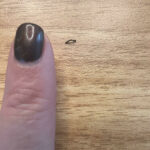
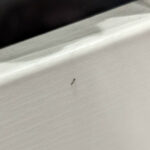
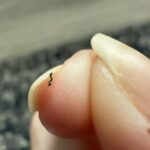
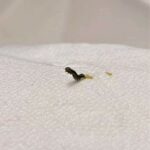

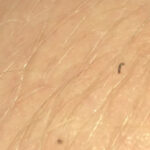
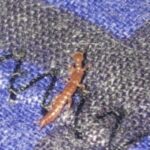
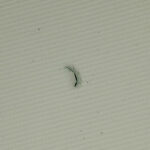






I think what I found on my lawnchair, and swiped off with a stick, was the beginnings of what would turn into a butterfly or moth. It was that short, fat very, very green chubby type……..moves very slowly, and I was a bit alarmed at first because I just planted tomato plants and I thought it might be after them. I hope it’s okay, if it is to become a butterfly. I couldn’t find it after I swiped it off the chair. It landed in the grass.
This was so helpful I love inchworms!